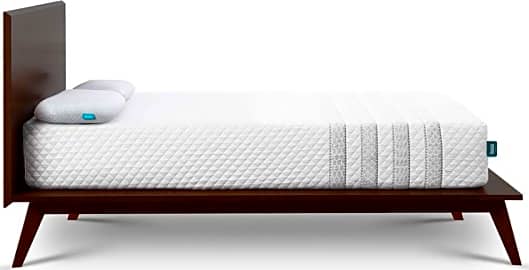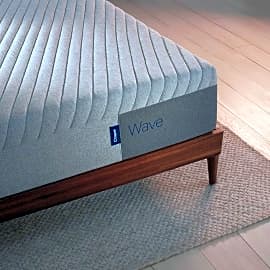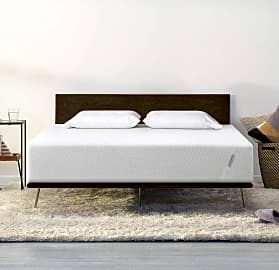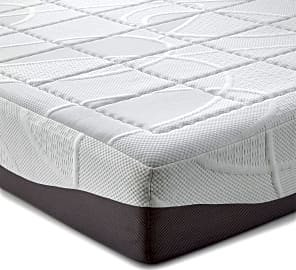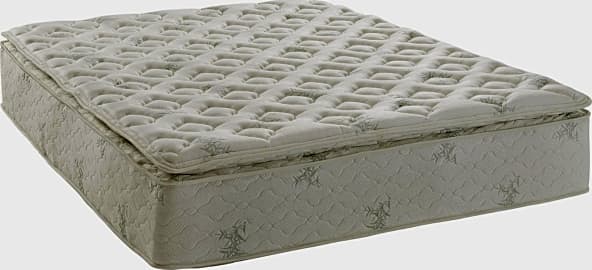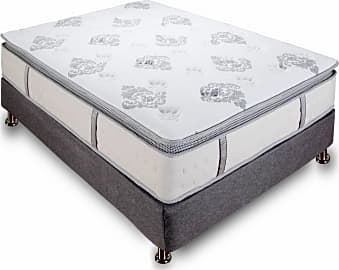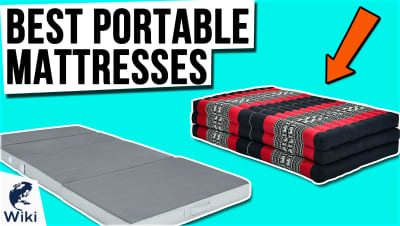The 10 Best Mattresses

This wiki has been updated 47 times since it was first published in March of 2015. If you're not getting the right amount of restful sleep that you need to get up and go in the mornings, then it's probably time you shelled out for a new mattress. Our comprehensive selection includes traditional coil-spring models, as well as the more technologically advanced memory and gel foam options that are becoming increasingly popular. One of these should boost your REM cycles. When users buy our independently chosen editorial recommendations, we may earn commissions to help fund the Wiki.
Editor's Notes
February 13, 2021:
Though many may not be aware, there is a lot of research that goes into designing mattress, and as we learn more about proper sleeping positions, mattresses are updated to reflect our new knowledge. This means manufacturers are constantly using new materials for both cushioning and support. This has allowed company's to make mattresses that feel plusher, without sacrificing on the support our spines need. We this in mind, we replaced the Casper Sleep 2018 with the Casper Sleep Wave 2020. The latter features supportive gel pods at strategically placed positions around the lower back and hips that should help keep your body aligned, without interfering with comfort, which is something the former lacked.
We also moved the Purple Hyper-Elastic to the special honors section, as it sometimes suffers from availability issues and can be easier to find directly on the company's website. It also tends to be a bit controversial in that some love it, while others hate it, so we wanted to replace it with something that had a bit more universal appeal. Taking its place, we added the Casper Original Hybrid 2020, which is one of the company's mid-tier offerings that combines springs and foam.
July 03, 2019:
When it comes to sleeping surfaces, one size certainly does not fit all since one user may have drastically different support needs than the next. Then there are the various sleeping positions, and the mattress that complements one may not complement another. For these reasons, we made sure our list was diversified enough to keep anyone seeking a new mattress comfortable and happy. Those who prefer a bit more spring in their mattress, knowing they like to change positions a few times during the night, will like the Signature Sleep Hybrid. Meanwhile, those who love the way a good memory foam mattress seems to conform to the body, and makes it nearly impossible to feel it if your sleeping partner moves, will appreciate the Zinus Memory Green Tea, the Perfect Cloud Gel-Pro Elegance, and the Tuft & Needle TN-01. That being said, we know some prefer a combination of bounce and give, which is why we included the Leesa Luxury Hybrid and the Classic Brands Mercer Hybrid. Finally, those suffering from Goldilocks complex, with standard mattresses being too firm, or too soft, may find the Purple Hyper-Elastic or Casper Sleep CA001 are just right.
Special Honors
The Saatva Classic Luxury If you like a standard innerspring mattress but want one that will actually stand the test of time, this is a prime choice as it boasts two types of coils. Unlike with most traditional models, you won't feel as though you are sagging more and more over time with this one. Additionally, it has a layer of padding beneath the surface for a touch of that memory foam feeling, yet it still offers excellent bounce, so turning over mid-sleep is easy. SaatvaMattress.com
The Purple Mattress With an egg crate-like design and boasting a proprietary polymer, the Purple Mattress generates drastically varied opinions, but if you aren't finding comfort in the models that monopolize the marketplace and want to try something different, it could be for you. purple.com
Feel Like Sleeping On A Cloud
Offset coils are also hourglass-shaped, but with flattened tops and bottoms.
Sleep is sometimes taken for granted, especially when a person gets used to a bed that doesn't offer optimal support for their body type or stress level. To get the most out of one's day, a person must be able to sleep soundly at night on a comfortable mattress that ensures a long, uninterrupted REM cycle.
A mattress is a large, rectangular pad designed to support the reclining body and is the major component to the setup of a bed. It is typically placed on top of a bed base or box spring, which acts as the bed's support or foundation, much like the underlying foundation for a house. The base is held in place by the bed's frame, which offers additional support when a mattress is installed. Bed bases are made from a series of heavy-duty metal springs, wood slats, or a combination of steel and wood.
Mattresses usually consist of a quilted or fastened case of heavy cloth made up of any combination of materials such as straw, cotton, or even foam rubber. Several mattress types are available, the most common being the innerspring and hybrid varieties. Innerspring mattresses leverage a support system consisting of different sets of steel coils. In fact, four different types of coils are available, including Bonnell, offset, continuous, and Marshall. Bonnell style is the most common for mid-priced mattresses and is characterized by knotted, round-top, hourglass-shaped coils. Offset coils are also hourglass-shaped, but with flattened tops and bottoms. These flat sections of wire are hinged together with helical wires designed to closely conform to a sleeper's body shape. Continuous coil mattresses are characterized by rows of coils forming a single piece of wire with a similar hinging effect to that of the offset style. Marshall (wrapped or encased) coils are thin-gauge, barrel-shaped, knotless coils that are individually encased within fabric pockets.
In some cases, manufacturers will pre-compress their coils in order to increase the degree of mattress firmness. The gauge (or diameter) of the coils often determines the level of support the mattress will provide. The lower the gauge number, the thicker the coils are. High-quality coils are around fourteen-gauge (1.63 millimeters in diameter) with a substantial amount of give when placed under pressure, as opposed to lower-gauge coils that are typically thicker, offering less give when under the same amount of pressure. Some steel coil systems are interconnected with wires, while other mattresses deliver individually-wrapped and pocketed coils.
The rule of thumb here is that the greater the number of coils an innerspring mattress has, the more points of support and contouring it offers the sleeper. Shape, design, and total number of coils also vary by the manufacturer. The innerspring is often covered with padding made from some type of foam or other fiber. A hybrid mattress simply combines the use of steel coils with other materials like polyurethane, memory, or even gel-filled foams. Mattresses can also be made entirely from foam materials, allowing them to be manufactured in different densities depending on a user's preference. Pillow top mattresses deliver an additional layer of upholstery that is sewn into the top of the mattress itself. Doing so makes it softer than other types of bedding. Some mattresses can also be filled with air or water chambers without any internal springs at all.
It's A Big Decision, So Pick Carefully
Consider a mattress as a long-term investment. While it will wear out eventually, you're going to have it for several years. Innerspring mattresses, for example, can last for up to ten years before needing replacement. For that reason, it's necessary to do your homework before you make a hasty decision.
Firstly, the materials one chooses should be sturdy, comfortable, and offer the right amount of support.
Firstly, the materials one chooses should be sturdy, comfortable, and offer the right amount of support. This can mean trying out a number of different mattress to select the type of support that makes you the most comfortable for an extended period of time, regardless of whether it's memory foam or thick coils. This doesn't mean simply going into a mattress store, sitting on a couple of floor models for a minute, and deciding right away. Take the S.L.E.E.P test when trying out different options.
What does this stand for? Select a mattress to try out. Lie down in a position that you would ordinarily choose in bed (stay on the mattress for about 15 minutes). Evaluate the level of comfort and support after several minutes. Educate yourself on its size, materials and weight. Partners (spouses) will need to test the bed as well. Following these guidelines will usually lead you in the right direction.
Secondly, consider both the size of the room and the mattress that will be the most comfortable. Queen size mattresses will provide ample room for a couple, but if you're worried about tossing and turning or prefer extra room, then a king-size mattress can be a wise investment as well. One must also keep themselves informed about the warranties available to get the most out of their purchase.
A Brief History Of The Mattress
The history of the mattress dates as far back as Neolithic times with the most primitive beds made from piles of leaves, grass, or straw. Animal skins were also used on top of these materials to offer additional protection from drafts, dirt, and pests.
By the 1930s, innerspring mattresses and artificial fillers become more common, leading to the introduction of the first futon by the 1940s.
By 3400 B.C.E., the ancient Egyptians slept on palm fronds piled against a wall in their homes, while pharaohs are believed to have been the first to raise their rudimentary mattresses off the floor, placing them on wooden frames made from elaborate woods. The Romans took this idea a step further around 200 B.C.E. by making mattresses from large bags of cloth filled with resilient materials that included straw, reeds, and wool, while the very wealthy stuffed their mattresses with feathers.
Fast forward to the middle of the eighteenth century and mattresses began to be stuffed with either cotton or wool. By 1865, the first coil spring construction for bedding was patented, followed by the first innerspring mattress invented by German Heinrich Westphal in 1871. In 1873, Sir James Paget presented one of the first water beds, previously designed by Neil Arnott, to St. Bartholomew's Hospital as a treatment and prevention measure for pressure ulcers (also known as bed sores).
By the 1930s, innerspring mattresses and artificial fillers become more common, leading to the introduction of the first futon by the 1940s. By the 1950s, the first rubber foam mattresses became available for purchase, followed by the first water beds in the 1960s. By the 1980s, the vinyl air mattress was introduced. Today, there is a virtually unlimited choice of mattress design to suit most any type of sleeper.




